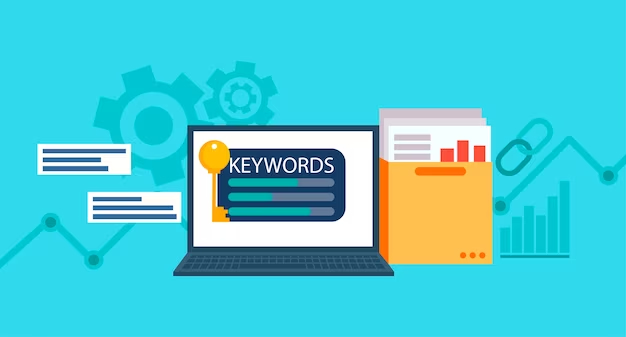Blogging is one of the most effective content marketing strategies that can help you grow your online presence, attract more traffic, generate more leads, and increase your revenue. However, blogging is not as simple as writing and publishing a few posts on your website. You need a clear and well-defined blog strategy that aligns with your business goals, targets your ideal audience, and delivers valuable and relevant content.
A blog strategy is a vision and a plan that you have for your blog. It guides you on what to write, how and when to write, and how to promote your blog content. A blog strategy also helps you measure and improve your blog performance, and achieve your desired outcomes.
In this article, we will show you how to create and execute a winning blog strategy in 2023. We will cover the following steps:
- Define your blog’s purpose and goals
- Know your target audience and competitors
- Conduct keyword and topic research
- Create a content calendar and editorial guidelines
- Write and optimize your blog content
- Promote and distribute your blog content
- Analyze and improve your blog performance
Let’s get started!
Define Your Blog’s Purpose and Goals

The first step to creating a blog strategy is to define your blog’s purpose and goals. You need to answer the following questions:
- Why do you have a blog?
- What do you want to achieve with your blog?
- How will you measure your success?
Your blog’s purpose is the main reason why your blog exists. It should be aligned with your business mission, vision, and values. Your blog’s purpose should also reflect your unique selling proposition (USP) and your competitive advantages.
For example, if you are a web design agency, your blog’s purpose could be to help small businesses create stunning and user-friendly websites that grow their online presence and revenue.
Your blog’s goals are the specific and measurable outcomes that you want to achieve with your blog. They should be SMART, which stands for:
- Specific: Your goals should be clear and well-defined, not vague or general.
- Measurable: Your goals should be quantifiable and trackable, not subjective or intangible.
- Achievable: Your goals should be realistic and attainable, not impossible or unrealistic.
- Relevant: Your goals should be aligned with your business objectives and priorities, not irrelevant or unrelated.
- Timely: Your goals should have a deadline and a timeframe, not indefinite or open-ended.
For example, your blog’s goals could be to:
- Increase your website traffic by 50% in the next six months
- Generate 100 new leads per month from your blog content
- Convert 10% of your blog leads into paying customers
- Establish your brand as an authority and a thought leader in the web design industry
Once you have defined your blog’s purpose and goals, you should document them and communicate them to your team. This will help you stay focused and consistent with your blog strategy.
Know Your Target Audience and Competitors
The next step to creating a blog strategy is to know your target audience and competitors. You need to answer the following questions:
- Who are you writing for?
- What are their demographics, interests, needs, and challenges?
- How can you help them with your blog content?
- Who are you competing with?
- What are their strengths and weaknesses?
- How can you differentiate yourself from them with your blog content?
Your target audience is the group of people who are most likely to benefit from your blog content, and ultimately, your products or services. You need to understand their characteristics, preferences, behaviors, and pain points, so you can create content that resonates with them and solves their problems.
Create Buyer Personas
One of the best ways to know your target audience is to create buyer personas, which are semi-fictional representations of your ideal customers based on real data and research. You can use tools like HubSpot’s Make My Persona to create your buyer personas easily.
For instance, one of your buyer personas could be:
- Name: Bob
- Age: 35
- Gender: Male
- Location: New York
- Occupation: Small business owner
- Industry: Retail
- Goals: To increase his online sales and grow his customer base
- Challenges: To create a professional and attractive website that showcases his products and converts visitors into buyers
- Preferred channels: Google, Facebook, YouTube, email
Your competitors are the other businesses or blogs that offer similar products, services, or content to your target audience. You need to analyze their strengths and weaknesses, so you can identify the gaps and opportunities in the market, and create content that sets you apart from them.
One of the best ways to know your competitors is to conduct a competitive analysis, which is a process of evaluating and comparing your competitors’ strategies, performance, and results. You can use tools like Ahrefs or Semrush to conduct a competitive analysis easily.
Some of the things you should look for in your competitors are:
- Their website design, layout, and functionality
- Their content topics, formats, and quality
- The keywords they are ranking for, their rankings, and traffic
- Content engagement, shares, and comments
- The blog’s strengths, weaknesses, and gaps
Once you have known your target audience and competitors, you should document your findings and use them to guide your content creation and promotion.
Conduct Keyword and Topic Research

The next step to creating a blog strategy is to conduct keyword and topic research. You need to answer the following questions:
- What are the words and phrases that your target audience is searching for online?
- Check the search volume, difficulty, and relevance of each keyword and topic.
- What are the user intent and expectations behind each keyword and topic?
- What are the content gaps and opportunities for each keyword and topic?
Keyword and topic research is the process of finding and analyzing the keywords and topics that are relevant to your blog’s purpose, goals, audience, and competitors. It helps you optimize your blog content for search engines and user intent, and drive more organic traffic to your website.
Utilize Keyword Research Tools
One of the best ways to conduct keyword and topic research is to use keyword research tools, such as Ahrefs or Semrush, which can help you discover, analyze, and prioritize the keywords and topics for your blog content.
For example, if you are a web design agency, some of the keywords and topics that you could target are:
- Keyword: web design
- Search volume: 74,000/month
- Keyword difficulty: 77/100
- Topic: What is web design and why is it important?
- User intent: To learn the basics and benefits of web design
- Content gap: A comprehensive and beginner-friendly guide that covers the definition, elements, principles, types, and best practices of web design
- Keyword: web design agency
- Search volume: 8,100/month
- Keyword difficulty: 59/100
- Topic: How to choose the best web design agency for your business
- User intent: To find and compare the web design agencies that can meet their needs and budget
- Content gap: A detailed and unbiased comparison of the top web design agencies in the market, with their pros, cons, reviews, and ratings
- Keyword: web design trends
- Search volume: 5,400/month
- Keyword difficulty: 43/100
- Topic: The top web design trends to watch out for in 2023
- User intent: To stay updated and inspired by the latest and greatest web design trends
- Content gap: A visual and interactive showcase of the most innovative and creative web design trends, with examples and tips on how to implement them
Once you have conducted your keyword and topic research, you should document your results and use them to create your content calendar.
Create a Content Calendar and Editorial Guidelines
The next step to creating a blog strategy is to create a content calendar and editorial guidelines. You need to answer the following questions:
- When and how often will you publish your blog content?
- What are the titles, formats, and keywords of your blog content?
- Who will write, edit, and approve your blog content?
- What are the style, tone, and voice of your blog content?
- What are the quality, SEO, and readability standards of your blog content?
A content calendar is a document that outlines the schedule and details of your blog content. It helps you plan, organize, and manage your blog content production and publication, and ensure that you deliver consistent and timely content to your audience.
One of the best ways to create a content calendar is to use a content calendar tool, such as Google Calendar, Trello, or CoSchedule, which can help you create and manage your content calendar easily.
Taking the previous example of a web design agency, your content calendar could look something like this:
| Date | Title | Format | Keyword | Writer | Editor | Status |
| 01/01/2023 | What is Web Design and Why is it Important? | Guide | web design | Alice | Bob | Draft |
| 01/08/2023 | How to Choose the Best Web Design Agency for Your Business | Comparison | web design agency | Bob | Alice | Outline |
| 01/15/2023 | The Top Web Design Trends to Watch Out for in 2023 | Showcase | web design trends | Alice | Bob | Research |
An editorial guideline is a document that defines the rules and standards of your blog content. It helps you maintain the quality, consistency, and credibility of your blog content, and ensure that you follow the best practices of writing, SEO, and readability.
One of the best ways to create editorial guidelines is to use a style guide, such as the AP Stylebook, the Chicago Manual of Style, or the Grammarly Handbook, which can help you define and follow the rules and standards of your blog content.
Write and Optimize Your Blog Content

The next step to creating a blog strategy is to write and optimize your blog content. You need to follow the following best practices:
- Write catchy and clear headlines that capture your reader’s attention and curiosity, and include your main keyword and benefit.
- Write informative and engaging introductions that hook your readers. Explain what they will learn from your blog post, and include your main keyword and CTA.
- Write concise and scannable paragraphs that use short sentences, bullet points, subheadings, and transition words to make your content easy to read and understand, and include your related keywords and terms.
- Write actionable and persuasive conclusions that summarize your main points, and include a CTA that tells your readers what to do next, such as subscribing, downloading, or buying.
- Use relevant and high-quality images, videos, infographics, or other visual elements to enhance your content, illustrate your points, and optimize them for SEO and loading speed.
- Try using internal and external links to provide additional information and resources to your readers, improve your SEO and credibility, and avoid broken links and spammy links.
- Use keywords and related terms naturally and strategically throughout your content, optimize your title tags, meta descriptions, headings, and URLs for SEO and CTR, and avoid keyword stuffing and duplicate content.
One of the best ways to write and optimize your blog content is to use content writing and optimization tools.
How Optimization Tools Can Help?
Optimization tools can help you:
- Generate catchy and clear headlines for your blog posts, based on your keywords and topics
- Write informative and engaging introductions and conclusions for your blog posts, based on your keywords and CTAs
- Write concise and scannable paragraphs for your blog posts, based on your keywords and subheadings
- Optimize your blog content for SEO and readability, based on your keywords, titles, meta descriptions, headings, URLs, images, links, and more
Once you have written and optimized your blog content, you should publish it on your website and promote it to your target audience.
Promote and Distribute Your Blog Content
The next step to creating a blog strategy is to promote and distribute your blog content. You need to use the following channels and methods:
Email Marketing
You can use email marketing to send your blog content to your email subscribers and encourage them to read, share, and comment on your blog posts. You can also use email marketing to build your email list and grow your blog audience.
Social Media Marketing
You can use social media marketing to share your blog content on platforms like Facebook, Twitter, Instagram, LinkedIn, and Pinterest, and reach more potential customers. You can also use social media marketing to engage with your followers and get feedback and insights on your blog content.
Guest Blogging
You can use guest blogging to publish your blog content on other relevant and authoritative websites and expose your blog to a new and larger audience. You can also use guest blogging to build backlinks to your blog and improve your SEO and authority.
Paid Advertising
You can use paid advertising to run ads on platforms like Google, Facebook, or LinkedIn, and drive more traffic to your blog. You can also use paid advertising to target specific keywords, audiences, and locations, and increase your conversions and sales.
One of the best ways to promote and distribute your blog content is to use a content promotion and distribution tool, such as BuzzSumo, which can help you promote and distribute your blog content easily.
Tools like BuzzSumo can help you:
- Find and connect with the influencers and bloggers in your niche, and pitch them your blog content for guest posting or sharing
- Search and join the relevant and active social media groups and communities in your niche, and share your blog content with them
- Analyze the best-performing content in your niche, and learn from their strategies and tactics.
- Find and monitor the mentions and shares of your blog content, and thank and engage with your promoters and readers
Once you have promoted and distributed your blog content, you should analyze and improve your blog performance.
Analyze and Improve Your Blog Performance

The final step to creating a blog strategy is to analyze and improve your blog performance. You need to use the following tools and metrics:
- Google Analytics: You can use Google Analytics to track and measure your blog’s traffic, engagement, conversions, and revenue, and identify your sources, channels, and campaigns.
- Google Search Console: You can use Google Search Console to track and measure your blog’s SEO performance, and identify your keywords, rankings, and issues.
Some of the metrics that you should track and measure are:
- Traffic: How many visitors are coming to your blog, and where are they coming from?
- Engagement: How long are visitors staying on your blog, and how many pages are they viewing?
- Conversions: How many visitors are taking the desired action on your blog, such as subscribing, downloading, or buying?
- Revenue: How much revenue are you generating from your blog, and what is your return on investment (ROI)?
You need to use these tools and metrics to evaluate your blog’s performance and identify your strengths and weaknesses. You also need to use these tools and metrics to optimize and improve your blog content and strategy and achieve your blog goals.
Synopsis
Blog marketing is a powerful and cost-effective way to grow your business online. By creating and promoting valuable and relevant blog content, you can attract and retain more customers, and increase your brand awareness, authority, and revenue.
However, creating and maintaining a successful blog is not easy. It requires planning, execution, and evaluation, and it can be time-consuming and challenging.
That’s why you need a professional web design service to help you create and manage your blog.
If you are looking for a reliable and affordable service, you can check out our services at My Content Quest.
Contact us today to get a free quote and consultation, and see how we can help you grow your business with a blog.

